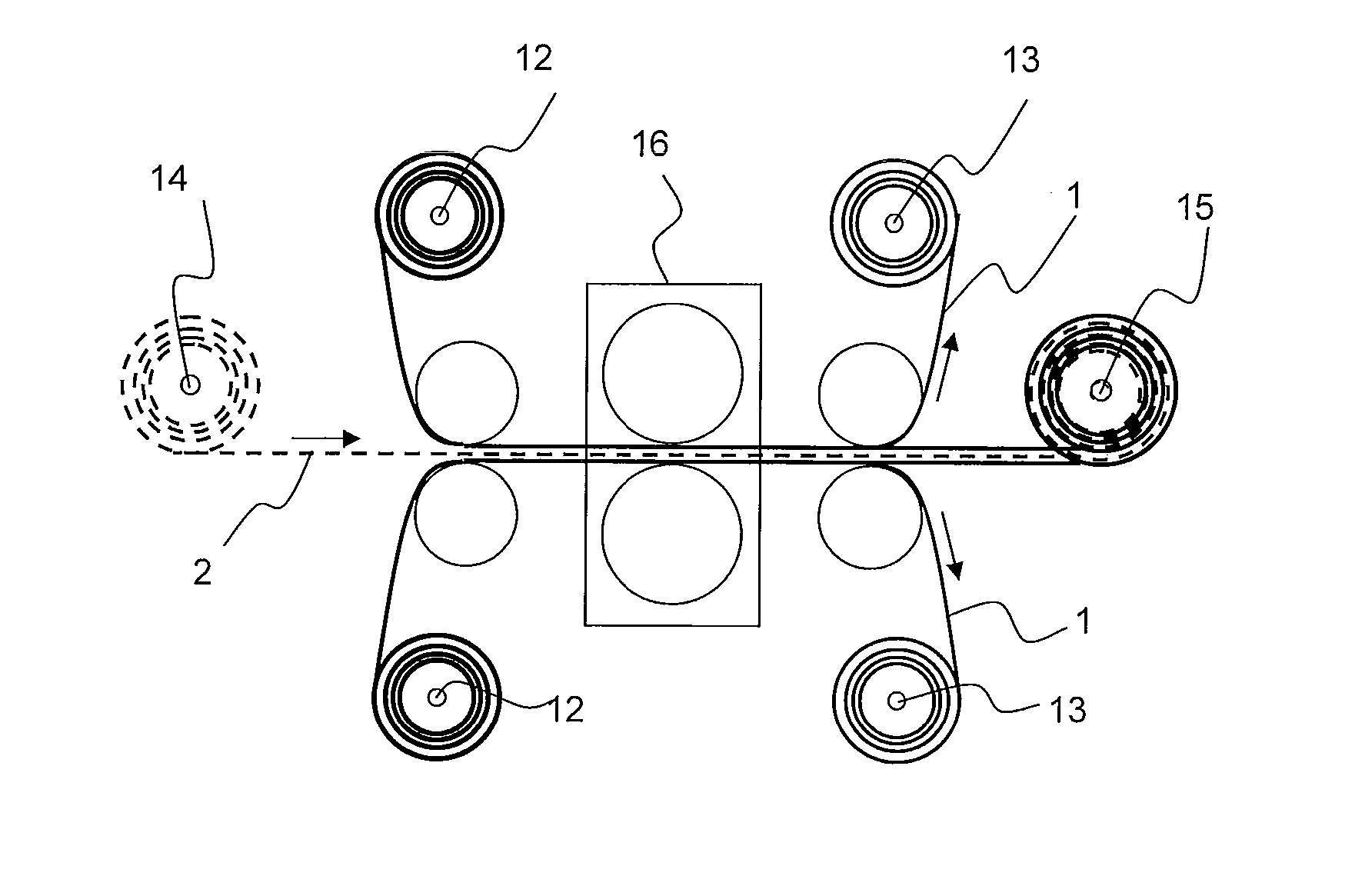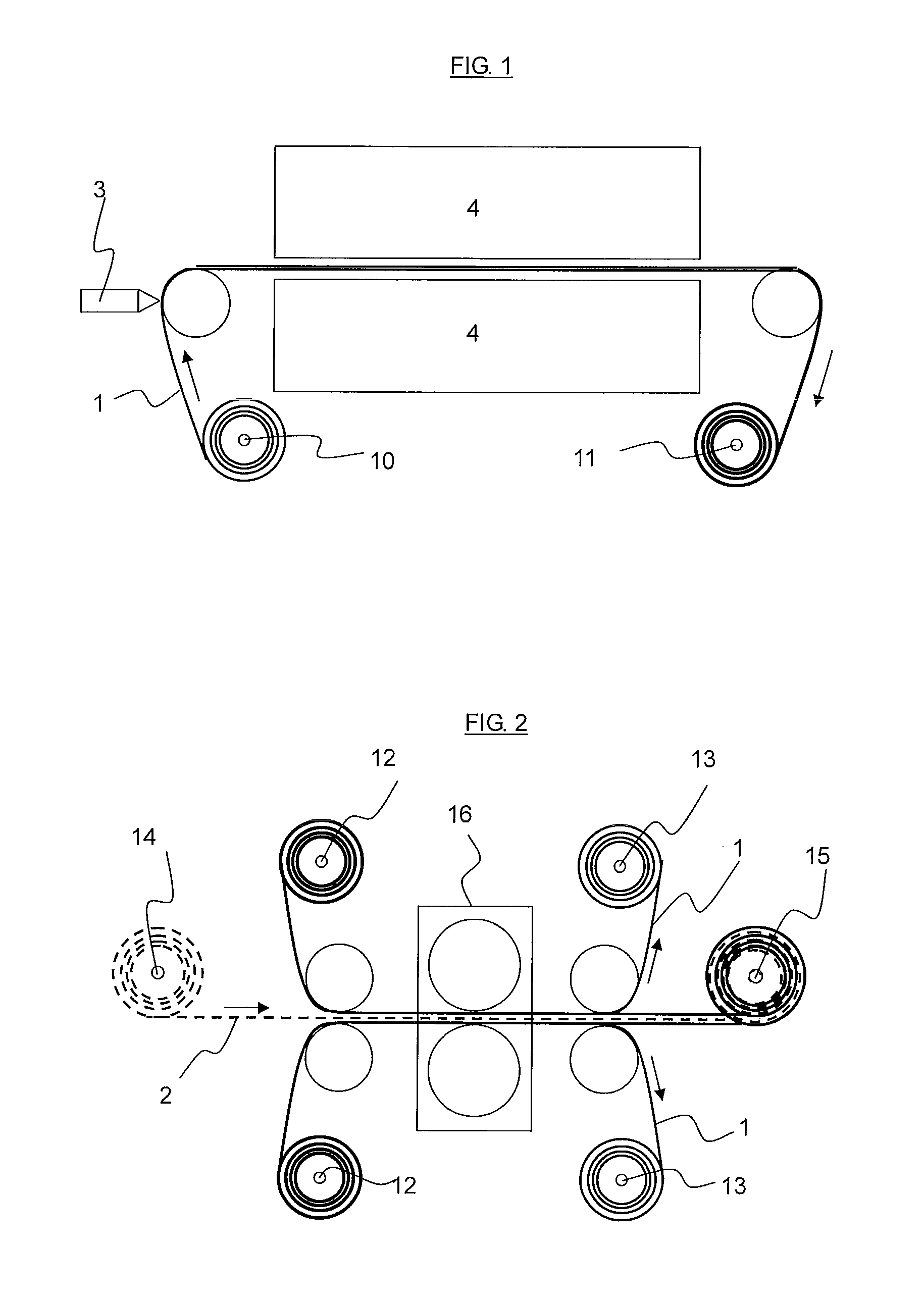Method for manufacturing electrode for electrochemical element
a manufacturing method and electrochemical technology, applied in the manufacture of capacitors, cell components, electrode manufacturing processes, etc., can solve the problems of increased cost, complex equipment, and variation in electrode performance, and achieve the effect of increasing the productivity of electrode production and good productivity
- Summary
- Abstract
- Description
- Claims
- Application Information
AI Technical Summary
Benefits of technology
Problems solved by technology
Method used
Image
Examples
example 1
Production Method of Positive Electrode Slurry
[0133]As the electrode active material of the positive electrode, 100 parts of activated carbon powder having a volume average particle size of 8 μm (MSP-20 by KANSAI COKE AND CHEMICALS CO., LTD.) which is alkali-activated carbon having phenolic resin as raw material; as the dispersant, 2 parts of 1.5% aqueous solution of sodium carboxymethyl cellulose (product number 2200 by DAICEL CHEMICAL INDUSTRIES, LTD.) in terms of solid content; as the conducting material, 5 parts of acetylene black (DENKA BLACK powder by DENKI KAGAKU KOGYO K.K.); as the binder, 3 parts of 40% aqueous dispersion of diene polymer having glass-transition temperature of −40° C. and number average particle size of 0.25 μm (copolymer obtained by emulsion polymerization of 60 parts of styrene, 35 parts of butadiene and 5 parts of itaconic acid) in terms of solid content; and ion-exchange water was mixed by a planetary mixer so as to have the total solid content concentr...
example 2
[0151]Except for using 40% aqueous dispersion of acrylate polymer having glass-transition temperature of −40° C. and number average particle size of 0.25 μm (copolymer obtained by emulsion polymerization of 96 parts of 2-ethylhexyl acrylate and 4 parts of methacrylic acid) as the binder of the positive electrode composition slurry and negative electrode composition slurry, the positive electrode for an electrochemical element, negative electrode for an electrochemical element and hybrid capacitor were produced as in Example 1. For each property of the electrodes for an electrochemical element and hybrid capacitor, measurement results are shown in Table 1.
example 3
[0152]Except for using polyethylene terephthalate film having a thickness of 38 μm (LINTEC Corporation, the contact angle with water in the surface with release treatment of the base material: 82°) in which the base material was provided with release treatment by alkyd resin, the positive electrode for an electrochemical element, negative electrode for an electrochemical element and hybrid capacitor were produced as in Example 1. For each property of the electrodes for an electrochemical element and hybrid capacitor, measurement results are shown in Table 1.
PUM
| Property | Measurement | Unit |
|---|---|---|
| Boiling point | aaaaa | aaaaa |
| Contact angle | aaaaa | aaaaa |
| Percent by mass | aaaaa | aaaaa |
Abstract
Description
Claims
Application Information
 Login to View More
Login to View More - R&D
- Intellectual Property
- Life Sciences
- Materials
- Tech Scout
- Unparalleled Data Quality
- Higher Quality Content
- 60% Fewer Hallucinations
Browse by: Latest US Patents, China's latest patents, Technical Efficacy Thesaurus, Application Domain, Technology Topic, Popular Technical Reports.
© 2025 PatSnap. All rights reserved.Legal|Privacy policy|Modern Slavery Act Transparency Statement|Sitemap|About US| Contact US: help@patsnap.com


